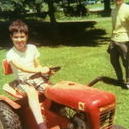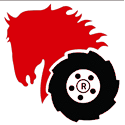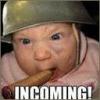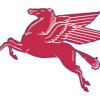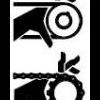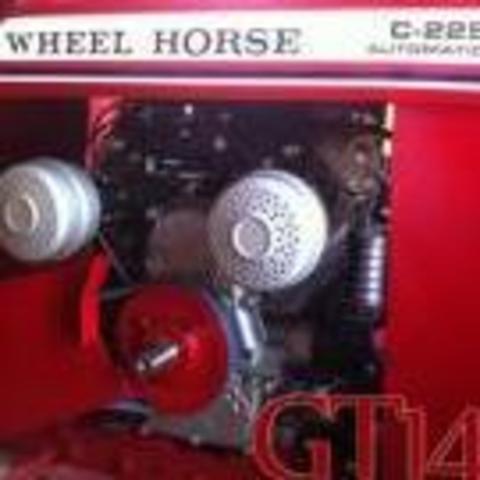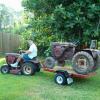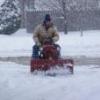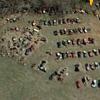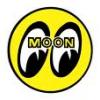Leaderboard
-
in Posts
- All areas
- Markers
- Marker Comments
- Marker Reviews
- Articles
- Article Comments
- Article Reviews
- Classfieds
- Classified Comments
- Classified Reviews
- Wiki's
- Wiki Comments
- Wiki Reviews
- Blog Entries
- Blog Comments
- Images
- Image Comments
- Image Reviews
- Albums
- Album Comments
- Album Reviews
- Files
- File Comments
- File Reviews
- Posts
-
Custom Date
-
All time
November 28 2011 - November 27 2025
-
Year
November 26 2024 - November 27 2025
-
Month
October 26 2025 - November 27 2025
-
Week
November 19 2025 - November 27 2025
-
Today
November 26 2025 - November 27 2025
-
Custom Date
06/27/2015 - 06/27/2015
-
All time
Popular Content
Showing content with the highest reputation on 06/27/2015 in Posts
-
20 pointsSo, here are mine. Not many human interest pictures like Stevasaurus posts, but this is mainly to give those not able to attend a feel for the "sea of red" at the show. I'm not sure what happened Saturday, but my pictures were taken after we set up on Thursday, and Friday morning. The first couple are of our campsite. The "Maynard Hotel", with Zeek's hauler/camper in the background, and Brian & Jo's Wheel Horse hauler/camper. The "uptown" campers Karl walking his dog. Stevasuarus talking to Racinbob and his wife, with Steve's wife Kris talking to Terry (vinylguy) in the background Don Varos in red discusses pie. Vinylguy's setup before they moved him to the barn. Bob Maynard's Wheel Horse Stuff. Yup, that's my display. rwilson. wallfish. woodchuckfarmer, and Jake And then the rains came. Off came the shoes and it was swim time. These next pictures are Friday's. This year they had a safety seminar for tractor drivers 15 and under. Wild Bill had a course set up for the kids to drive. If they passed, they got a red wristband to say they were safe drivers. I think every one passed. No thanks Steve, I'm trying to quit. He worked at the teeter-totter all day and finally SUCCESS. And here is everyone that showed up for the group picture...
-
10 pointsPretty busy at the show with the great unexpected weather on Friday. didn't get a lot of people pics as most were off wandering the show as well. Thursday night I realized I never took the phone out once. Tried to make up for it Friday. I hope someone got a pic of me trying to "Hitch Hike" during the cruise: Mirror shot when I left home. Where's The Dino? Here he is out at dinner! Got Racinbob's wife Nancy in a candid shot! Great people by the way, awesome meeting you! I took a pic of my tractors in case no one else did! RS First Dog Pepper! Karl at the controls! Tractors lined up Comin at Ya Steve campaigning again. I think with R Wilson A Wallfish inspired Hot Rod Zeeks Masterpiece. My favorite tractor at the show! Well done neighbor! Steve's Heavy Hauling! That blower and tractor fit like a glove on the vintage trailer! Looks like Lane snagged someone's skivvies during the parade! YIKES! Bringing up the rear of the parade. Pics from my Hitch Hiker seat at the cruise Lights are on but nobody's home!!!!
-
7 pointsHad a great time at Wauseon Ohio Show Fri & Sat. Well worth the 150 mile one way trip. Thanks. Pat, Bill, Carl, Rod, Steve & John. You really made me feel welcome & took good care of me.
-
6 pointsHere's a few of mine. A little wet today, but yesterday was beautiful and made it worth it. A pretty fair amount of people stuck around today. Awesome time and great seeing everyone again This is the camping area (some of it) with buckranchers rig and hotel Maynard Hotel Zeek Squonk and Steve. Since everyone always asks Squonk where Craig is, he decided to just get a shirt. Craig has his own custom that says "Here's Craig" Me . . . I missed the official Red Square picture because I was 10 deep in the lunch line when it was taken Mrs. Buckrancher and Mrs. Zeek Mrs. Zeek and Rocuski's mom Nylyon (Karl) videoing the safety class BPJunk doing the safety class Rocuski's dad hard at work . . . My Raider project . . . .
-
4 pointsNeed a tin roof on it. It says premium because it has stronger legs to hold more water.
-
3 pointsI am so fortunate to have been able to make it to the WHCC show. I spoke with a lot of you, both members and non-members of RS and one thing we all agreed on. The WHCC show is really a first class production. No one could think of another show which is as well run as this one is, from Bill and his famous white pants and red shirt to the church ladies serving us our food (and everything in between). So if you've ever attended I think you'll agree, this is THE event to attend. That said, this is really important.... The show is FREE for us to attend.... that's right FREE! BUT it is NOT free to put on. Where does the money come from? The sale of raffle tickets, shirts and of course WHCC membership. What's that, not a member? I'll make it easy for you.... download the attachment today and send in your $10 for a year of WHCC membership! Better yet, go to the 2016 show and show your support, the shirts are absolutely the best quality with a breast pocket. You MUST mail in your application with a check or money order as PayPal and Credit Cards are not accepted. Please support them, if you've ever attended the show, you know why, and if you haven't, supporting will help insure the show will still be there when you can attend! WHCC_MembershipApplicationForm-v2011.pdf
-
3 pointsAnd I want to thank Jo Marion (Mrs. Buckrancher) for taking the group picture for me again. She always does a great job. Thanks Jo.
-
3 points
-
3 pointsSince the weather forecast was looking ominous, I was all packed up and ready to go home after the campfire. Many others had already left, and still more were securing their stuff or moving into barns or under pavilions because of the forecast So here are a few pictures that I took just before I left last night. I don't know how many more showed up, but before I took off, the campfire was great.
-
2 pointsWheel Horse B/C/D Tractor Dash Panel Restoration Tutorial How to properly restore a Tractor Dash Panel Wheel Horse Dash Panel Restoration Tutorial Originally posted by: MikesRJ - 03/06/2010 Click any picture in this article to view a larger version of the image Restoring old tractors (garden type or full-size farming equipment) presents the restorer with many challenges. Not so different from automotive or aircraft restorations, certain little tricks-of-the-trade are learned along the way which every restorer should have in their basket of tricks. The older a restoration subject is, the harder at times it is to locate a suitable "show-quality" part to complete the restoration. Sometimes you simply don't have a choice but to restore the part you have in hand because a replacement just simply does not exist. This how-to presents one of those tricks. The best part about this particular restoration technique it that it can be used on any part made of plastic, PVC, vinyl, leather, cloth or wood. The images above are of the Dash Panel before it was removed from a Wheel Horse C-160 Tractor, and after this restoration process was performed. Yes, boys and girls, that is in fact the same dash panel shown in both pictures. Excellent results can be achieved if you remind yourself to be patient, take your time, and follow the process presented here. Practicing the method on anything with raised letters beforehand also greatly enhances your chances of success. Simply follow this process on a "scrap" item and you should be ready for the actual piece in no time. PROCESS OVERVIEW: As restoration quality and New Old-Stock (NOS) Wheel Horse Dash Panels are harder to come by, it becomes necessary to restore what you have rather than replace the part entirely. This page is dedicated specifically to the restoration of an otherwise "good condition" dash panel that has been time-weathered, and return it to its original luster. Before moving on to restore your tractor restoration Dash Plate, it is HIGHLY SUGGESTED that you read through this entire article and perhaps try this method on a spare or "sacrificial" part beforehand. You only have one chance to do it right on your final piece, and a million ways to do it wrong along the way. As a side-note: This process can be used with very little variation on any tractor part which is made of vinyl, plastic, PVC, cloth, leather, or rubber. The VHT line of products is extensively used in the automotive/aircraft restoration worlds for returning anything made of these materials back to near original appearance. See more details concerning VHT Vinyl Dye products at this website: http://www.vhtpaint.com TOOLS REQUIRED: 1. Small bristle brush and Dawn Dish Detergent 2. 1/8" Metal punch and heating source (if making repairs) 3. 800 grit Wet/Dry Sand Paper 4. 0000 (fine) Steel Wool 5. Common Automotive Brake Fluid 6. Paper Towels 7. VHT Vinyl Dye, Gloss Jet Black (p/n: SP941) 8. Elmer's "Painter's" Opaque Paint Marker (fine & wide tip) 9. Dental Picks, Tooth Picks, and/or Exact-O Knife PAINTING TECHNIQUE: The white borders, letters, and symbols on the dash panels were originally manufactured using a screen printing roller technique. This method produces an extremely thin, opaque layer of material which is extremely strong and relatively long lasting. Since reproducing this technique is far more difficult for the "home restorer", the method presented here is relatively easy, and mimics the original process quite well. The technique I use is pretty straight forward and quite simple to do at home. In order to apply the thinnest coat of paint the tip of the paint marker should be as "dry" as possible, but still contain enough material to deposit on the surface. This technique is called "Dry Brushing" and is used by painters and modelers as a method for adding subtle details to whatever they are painting. For the purpose presented here we are using this method to apply the thinnest coat of material we can, in each successive pass over the surface. Once the paint marker is prepared for use per the package directions, the tip of the marker should be touched to a paper towel and dried off as much as possible before touching it to the part to be painted. When moving to the next paint area on your subject piece, re-load and re-dry the tip, then proceed. When painting with the white paint markers, insure the tip is about as wet as when using an artists "dry-brush" technique before touching it to the part. Apply the paint so it thinly "flows" over the surface, and use a paper towel to keep the tip "almost dry" of wet, runny paint between individual characters on the plate. Apply the paint with a very light touch in single passes only. Don't cover any more than a single pass at a time, building layer thickness with each additional coat. As always, follow the package directions for all of the products used in this process. When applying the paint, you are NOT wiping it onto the surface like a paint bush. You are also NOT trying to cover the surface completely in a single pass, rather you want to build successive layers, allowing each layer to completely dry, until an even and completely opaque coverage is achieved. If you attempt to wipe the paint onto the surface, you will produce "edge roll-over" and the paint will either bulge over the side edge of the surface, or run down the side, both of which conditions are undesirable. You should apply the paint in a very light tapping, or patting, manner where the tip is ever so lightly tapped onto the surface, moved over half of the width of the paint marker tip and tapped again; and the process continues from one end of the detail to the other. The only exception to this is when you are applying paint to long, continuous details such as the two border lines around the Dash Panel. These features should be lightly glided over using the dry brush method, from one end to the other end, and the tapping method is applied to finish the strokes at the very tips of these details. Aside from the method of application, the most important factor to keep in mind is that you are NOT trying to completely cover the underlying black dye color in a single pass. What you ARE trying to do is build-up multiple, very thin layers of paint until the white completely masks the black underneath. If done in this manner you are left with very sharp, crisp edges and an overall very thin opaque paint coverage of these raised dash panel details. The second most important aspect is that you insure your panel is well supported, i.e.: will not move during the painting process, while the heel of you painting hand is firmly planted on the work surface as you apply paint. This will insure the steadiest hand, and you will therefore have better control of the paint marker tip and where it touches while you apply the paint. Of third importance, as in any paint application process, starting off with a well prepared surface ALWAYS results in a higher quality final appearance. Complete and thorough cleaning, drying, repairs, and re-cleaning are all painstaking and necessary steps before applying any dye or paint to the surface. The instructions below go into greater detail where necessary, and if followed closely will result in a "better than new" looking part for your tractor restoration. Step 1: Thoroughly Clean the Dash Panel Here's where it started! Once removed from the machine, the entire dash panel should be thoroughly cleaned of all dirt, grease, oil, and old marking paint on all sides. Automotive Brake Fluid is a good paint and marking ink softener, but care must be taken to insure the brake fluid does not "melt" the plastic. I normally test the brake fluid method on the back side of the part, or on any surface which will not be seen when the part is re-installed, in order to insure the brake fluid will not attack the plastic material. Use the brake fluid sparingly, and allow it to sit on the surface at least 1/2 hour, to "loosen" any foreign materials (paint, ink, or hard stains) from the surfaces. Then with a combination of 0000 steel wool (try not to scratch the plastic), gentry scraping using the edge of an exact-o knife, and/or dental picks and tooth picks, you can easily remove all of the unwanted debris. Once all of the foreign matter is removed, the plate should be thoroughly scrubbed with a small plastic bristle brush and Dawn Dish Detergent. This will remove any remaining oil and dirt from the plate, the corners, and the edges. Rinse with warm water and allow the piece to thoroughly dry before continuing. Once it is completely cleaned it should look similar to the image below. Starting Point Step 2: Repairing Surface Blemishes This is the tricky part. If any surface blemishes exist, you need to make a choice whether to make a repair or leaving it as-is. Obviously, starting with a high quality unblemished panel is more desirable, but you may not have a choice but to use a "less than desirable" piece due to replacement part availability. Attempting to repair any surface issue may only result in a far worse appearance than leaving it alone. Choose wisely based on your abilities. Only one surface blemish was corrected on this example (the second "N" in "IGNITION"), the second blemish (the "wiggle" in upper left corner of the Electric Clutch "OFF" arrow-bracket) was left alone as it was too dangerous to attempt repair without further damage. The right side of the "N" was smashed down and the right "leg" of the "N" was partially split in two. A small round punch was used to "re-form" the letters edge by heating the punch tip to just below the melt point of the plastic, and "pushing" the letter back into shape. The split essentially closed up and re-bonded to the adjacent part. Care must be taken to not overheat the punch as you do not want to melt the plastic, only make it soft so it will "move". Once repairs are completed, re-clean the part as you did in Step 1. Step 3: Restore Plastic Color and Shine Many products exist which are designed to restore vinyl and plastic to their original luster. I have used many of them with varying results. VHT (A division of Dupli•Color, Inc., a Sherwin-Williams Company) produces a vinyl dye which comes in several colors, and in Gloss and Flat finishes. The product is NOT A PAINT, it truly is a dye designed for vinyl, plastic, cloth, leather, and wood. The vinyl dye, when applied to plastic, forms a polymer on the surface which actually transforms the plastic material surface into a new material matrix. I prefer the look of the hi-gloss finish as it makes plastic parts look more realistically like a "new part" than does the satin finished dye. VHT Vinyl Dye, Gloss Jet Black (p/n: SP941) in the 11 oz. aerosol was used to treat this Dash Panel, which only required a single, light coat to restore the dash panel to its original appearance. NOTE: Allow the dye to absorb and surface-dry at least 4 hours before proceeding to the white painting process. Step 4: Applying the First Coat of White Paint Applying the white paint is rather easy, but does require a little technique and a steady hand. For this step I used Elmer's "Painter's" Opaque Paint Markers (available in most craft and hobby shops). The markers come in several tip-sizes, I used the fine and wide tips here, and is composed of an opaque acrylic paint. The acrylic paint bonds extremely well to the dyed plastic, and holds up to temperature variations and the weather quite well too. LARGE PANEL DETAILS: When using the paint markers, do not press down with any significant force while painting. The driest tip (artists "dry-brush" technique) and the lightest touch (the least amount of downward force) on the plastic produces the best results. Using the wide tipped marker, dry the tip on paper towel and very lightly cover the large borders with a single pass. DO NOT go over them a second time, as doing so will leave "brush marks" in the paint. The result should be an almost see-through appearance of the white paint. Several coats will be necessary, so if the black shows through, leave it alone. Also, "paint" any large details on the face area; such as the choke symbol, large letters, rabbit and turtle; using the wide tip paint marker, but use the "PATTING" paint method described below for these smaller details. SMALL PANEL DETAILS: As before, you are applying a very thin coat, so make sure the marker tip is almost dry and apply only a very thin coat on the first pass. Using the fine-tip paint marker for lettering and small details, use a patting (or tapping) technique to apply paint to the tops of the letters. Begin at one end of the letter and overlap your taps, moving toward the other end of the letter. Don't wipe the paint on, PAT it on! Especially at the ends of the letters. This keeps the paint from "rolling over" the edges of the raised detail. Dry the tip on your paper towel frequently, and between every new detail painted. NOTE: Notice the black showing through the white in the image below. Keep the first coat VERY, VERY light. Step 5: Apply Additional Coats of White Paint ALLOW AT LEAST 4 HOURS BETWEEN COATS The application of paint continues as described in Step 4 until all of the painted areas are completely opaque and covered well. With each pass you will see the paint begin to almost "pool" on the top of the surface. As the paint dries it will flatten out to a nice even coat. The desired result is normally accomplished in just two to three coats of white paint. If you have blotchy or spotty coverage, you can use 800 grit wet-dry sand paper to lightly sand the white faces flat and even the paint coverage, then apply a final top coat after re-clean and dry the part. Make sure you allow the paint to dry thoroughly before sanding, and re-clean the part before applying the next coat of paint. Make sure all surfaces are evenly covered without brush strokes. The image below shows good coverage with very little over-painting or edge "rolling" after only two coats have been applied. Some letters and small details will need to be scraped and cleaned up prior to applying the last coat of white paint. Step 6: Finishing Up The final step in the process is to clean up any mistakes or over-painting (edge-rolling). This step is normally done BEFORE the last coat of white paint is applied, so that any scrape marks or edges can be covered on the final pass. I normally use dental picks, tooth picks and/or the tip of an Exact-O Knife to clean any edges which were over-painted or where errant paint has been deposited between letter lines. Any over-paint on the panels surface can be covered up by spraying some of the VHT dye into a small cup and using a fine tipped artists brush to "dry-brush" the paint drip into oblivion. Once the final coat of white marker paint has dried for at least 24 hours, crumble-up a piece of regular kitchen paper towel and buff all of the white painted details. The paper towel material is just course enough to polish the top surfaces and burnish the edges of the white details, giving your panel a "finished" look. The polishing will also remove any specs of dust which may have settled on the surface during drying time. Your piece will now be remarkably similar to an original new part, and is ready for installation on your pride and joy machine. The completed piece is now "Show-Ready" and looks like the images below. My thanks go out to Bob Maynard ("RMaynard"on the Red-Square forum) for the use of his B-80 dash panel in the creation of this How-To. Bob mentioned somewhere on the bulletin board that he was in the market for a NOS Dash Panel for his B-80 restoration. He also mentioned that he had an old usable one in-hand, but did not think it was show-quality enough for his restoration. I offered to restore his old panel for this tutorial, with the thought that he could perhaps use the result on his B-80 should he not find a suitable replacement. I hope you enjoy the tutorial, and Bob; Thank You for allowing me to use your panel for this example.
-
2 pointsDefinitely, a first class production... well worth the minimal cost of membership.
-
2 points
-
2 pointsI started taking pictures on Thursday and when I reached number 26, that camera said "no more storage". It was a 16 GB card, so I knew I had more than 26 pictures available. So I promptly decided to find someone with a laptop and a card reader, save my 26 pictures and then reformat my SD card. So I opened camera and much to my surprise, there was no SD card. DOH!!! That is when my friend Steve came to the rescue and lent me an extra SD card that he had. Dino, you're the man. Pictures will be posted as soon as I do a little editing.
-
2 points
-
2 points
-
2 pointsBeen there, done that! Only mine was with the old school (I think called it "film" ) and realized that it was still winding at #39. Steve, really is 'Dah Man!
-
2 pointsWhat I am going to say is my opinion, but I know it is shared by many.Always select a machine shop that has experience with small engines, specifically Kohler.Always have a copy of the Kohler K-Series service manual and rebuild manual on hand. (available for free download on this forum).Always read completely how to rebuild an engine if you are going to attempt it yourself.Always follow Kohler's instructions in the manual.The commonality that I see here is the "professional mechanic". I have known many professional mechanics that I would not let touch the inside of my engine. There is a big difference between a mechanic and a machinist. When a cylinder is bored, you should always have the replacement piston and rings on hand for the machinist to check specs as the bore is being cut. Without it, he is basically just guessing at a size. There is nothing wrong with Stens parts. Even if they are slightly out of spec, a good machinist will adjust to compensate for differences. Kohler recommends using straight SAE 30W, SF or better oil for break-in.
-
2 pointsGrandsons needed to sweep one section of the bank barn. Rides out. Pennsylvania Panzer Wagner Allis Chalmers B-10 Work Horse 416-8
-
2 pointsElvin Bishop Old School and Can't Even Do Wrong Right http://prairiehome.publicradio.org/listen/?date=2015/06/20&identifier=apm_audio:/phc/segments/2015/06/20/phc_segment_11_20150620_128.mp3
-
2 pointsOk Callen Lucky for me you were right. I pulled the weight off and noticed I could stick my finger in the whole, so I gave the wheel a good tug and it popped right off almost knocking me over. I ran my finger inside the hub and noticed that neither set screw were tightened enough to even feel them. Lucky for me that it didnt fall off when my son was out riding it. I pulled the hub off the wheel and tightened BOTH set screws as tight as I could get them. then reassembled it and did a test drive in 3 Hi and held the wheel all the way to the left at full throttle. Got a little sketchy at times, felt like the machine was on one rear wheel a few times. Then I tried some grades side ways to get the wheel to slip. When I get it back in the garage,,, nothing no more than 1/8 of play on the axle..even with me pulling with my feet against the machine. So trans seems good ... so it appears I am back to it being a tire issue.
-
2 points
-
2 points
-
2 pointsMan, did it rain last night. Hoping for a reasonable day today. Weather looks like it's going to cooperate until this evening. Probably going to start another downpour just as the "cruisin' to the oldies" gets started. Then, the rain starts again after midnight, and is expected to continue very heavy all day Saturday. 2" over 8 hours is forecasted. I think today (Friday) is going to be the best day. I've got lots of pictures, but can't upload them until I get back home. This is a shot from the poor man's camping area, as opposed to the shot from Karl, taken in the "uptown" camping area.
-
1 point
-
1 pointFound the Cheese Grater listed on C/L in early spring this year... called the number and found our very own Zeek on the other end looking to find it a new owner. Decided then to do the exchange at this years big show...was pretty tough waiting to finally pick it up. That Zeek is such a great guy, even helped me get it loaded up... was a great help, allowed me and Mrs Rules get back on the road, for another 4hr ride...and beat all the Friday night rain coming home from the show.
-
1 pointDang!! I thought he was gonna rip that cord right outa the recoil! Great video! Mike.........
-
1 pointThanks for the comment Mike! It was great seeing you at the show again Thanks for the parts!!
-
1 point
-
1 point
-
1 pointgood picture's Bob did you hear the scary techy tail Bill was telling us at the campfire? Brian
-
1 point
-
1 pointAnd in the mental image forever etched in my mind. Thank you for the pictures, and it was great to see you again!
-
1 pointCongratulations on winning the truck, and thank you Terry for the popcorn and the prize. Your grand daughter is adorable, but we need to work on the number 25
-
1 pointPlease don't misunderstand my comment. I'm not disputing that you and your friend may have all the tools and the list of specifications. But if you do, and you know how to use them, then you would not be asking if the rings are too tight for the bore. If a cylinder has been bored to .020 oversize, and you have rings that are .020 over, when they are test fitted into the cylinder, you should have the proper gap, or slightly tight. Then you grind or file them to get the right gap. You only need feeler gauges to check that dimension. I have never had a machine shop do a turnkey rebuild. I always do the disassembly and reassembly myself. A complete rebuild for me using aftermarket parts usually runs about $125 to bore and hone the cylinder, $75.00 to grind the valves and set the gaps if needed. $85 to turn a crankshaft. I buy individual rebuild parts as necessary. And as I said, I do all but the machine work myself.
-
1 point
-
1 pointThanks, bms, I agree that something isn't right.No dispute there. How much did your three rebuilds cost? Did you order parts, or did the machinist do a turnkey job? Were you using Kohler parts, or aftermarket?
-
1 pointFollowing up on the comments I made, I would take the engine to a good machine shop as I stated above. Have them spec the engine and see what the problem is. A little money spent to have things checked out is a lot cheaper than a new engine.
-
1 pointCome on Mike. We're not getting any younger and time waits for no one. The heck with work. It will be there when you get back
-
1 point
-
1 pointThe CD player was removed so Bill couldn't play the music. Good news is the cruise night video won't get taken down for copyright violation
-
1 pointKarl, thanks for walking around the show grounds for us. I am in the hospital for PT following spinal surgery and you just made my day!
-
1 point
-
1 pointWatch out for that big tree both coming and going! i'll be there. Might leave a bit earlier than usual though. My batteries wear out faster than they used to.
-
1 pointIf you connected the voltmeter as I said on each large cable at the starter solenoid and got a 12 volt reading the solenoid is not making contact when activated (Key in START position). The red tester lead goes to one cable and the black to the other cable. The reason this failure shows 12 volts is because the battery cable has 12 volts in it and the starter cable is grounded through the starter motor and engine back to the chassis ground cable. If the solenoid is good you would get a 0 volt reading because there would be 12 volts in both cables. Same results as if you touched both tester leads to the (+) battery post. Reading of 0 volts. Garry
-
1 pointExcellent pictures...since I have a B-100...I have looked at your pictures 6 times already...and I have a feeling I am going to check them out some more.
-
1 pointWhether a 42 or 48" deck, the 'baffles' on the bottom side of the deck, along with the angle end of the blades are designed to create a vacuum to 'stand up' the grass after your front tire/wheel has ran over and packed it down. In effect, a wind tunnel or tornado (for lack of a better word) is created under the deck within the baffles to cut grass evenly. This works quite well in dry grass, but is compromised when cutting wet or extremely tall grass. So, you are losing efficiency by 're-cutting' as you described. With my 48" deck, I guide the OUTSIDE EDGE of the front wheel to 4 or 5 inches INSIDE the prior cut. When turning a close radius, close that path by the width of front tire so as not to leave an uncut strip.
-
1 point
-
1 point
-
1 point
-
1 pointGot the blow shield done. made from 8 inch ID aluminum tube with a .312 wall. That should stop anything that gets throw at it. I HOPE. any way I incorporated the clutch pivot and a clutch slave cylinder. so its a clean and easy way to work on.


